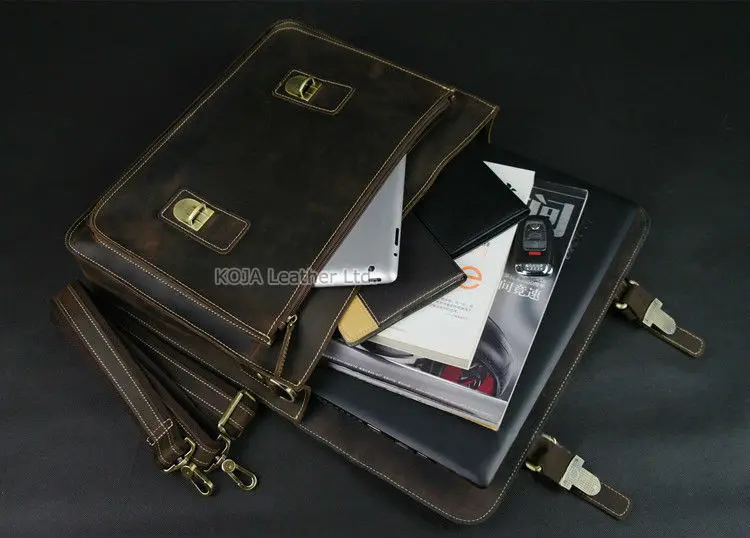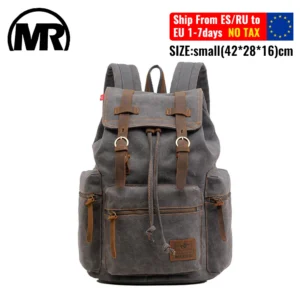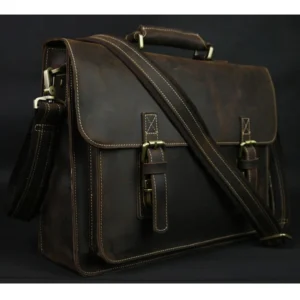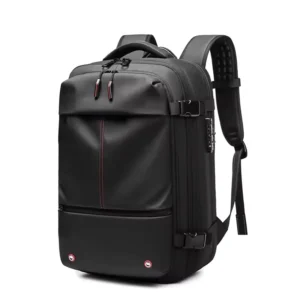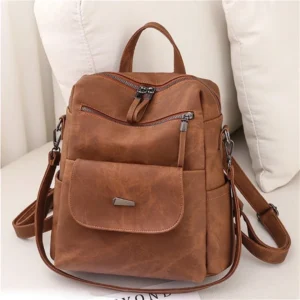Introduction: Understanding Full Grain Leather’s Limitations
Full grain leather represents the highest quality cut from the hide, featuring the intact top layer with its natural grain pattern. Widely celebrated for its exceptional durability, unique character, and ability to develop a beautiful patina over time, this premium material has earned a reputation as the gold standard in leather goods.
While many leather enthusiasts praise its qualities, making an informed purchase decision requires understanding both sides of the story. Despite its premium status and undeniable benefits, full grain leather does come with several disadvantages that might make it less suitable for certain applications or preferences.
In this comprehensive guide, we’ll explore the genuine drawbacks of full grain leather, from its significant cost and maintenance requirements to its physical limitations and sensitivity to environmental conditions. Understanding these limitations helps consumers determine whether full grain versus top grain leather is the right choice for their specific needs and expectations.
Let’s examine what makes this premium material challenging for some users and applications, allowing you to make a more balanced assessment before investing in your next leather product.
Premium Price Point: The Cost of Quality
Perhaps the most immediate and obvious disadvantage of full grain leather is its premium price tag. Full grain leather products typically cost 2-3 times more than items made from other leather grades or synthetic materials.
Several factors contribute to this substantial price difference:
- Limited supply: Only a small percentage of hides meet the stringent quality standards required for full grain leather
- Intensive selection process: Each hide undergoes thorough inspection to identify those with minimal surface flaws
- Skilled craftsmanship: Working with thicker, less forgiving material requires more experienced artisans
- Minimal processing needs: Since full grain leather undergoes minimal correction, it requires higher initial hide quality
In practical terms, while a quality full grain leather backpack typically ranges from $200-600, comparable designs using corrected grain leather might sell for $100-250. This price gap represents a significant consideration for many consumers.
The higher cost raises an important question about value versus price. While 100 percent leather products often deliver superior longevity, the initial investment can be prohibitive for those with budget constraints or who aren’t certain about their long-term commitment to a particular style or design.
Natural Imperfections and Inconsistent Appearance
Unlike heavily processed leathers, full grain leather proudly displays the animal’s natural history. While leather enthusiasts often celebrate these characteristics as adding “character,” they can present challenges both for manufacturers and consumers.
Every full grain leather hide features unique markings: insect bites, healed scars, growth marks, and variations in grain pattern. These natural features make each piece one-of-a-kind but also create several disadvantages:
First, these variations make it impossible to achieve perfect consistency across products. Two full grain leather backpacks from the same manufacturer may look noticeably different due to these natural variations.
Second, the unpredictable appearance can clash with consumer expectations. Someone who has seen a perfectly photographed sample online might be surprised when their actual product shows natural markings or color variations not visible in marketing materials.
For manufacturers, these natural variations increase production complexity. Cutting patterns must work around blemishes, resulting in higher waste percentages and production costs. The need to carefully match sections while respecting natural markings also slows down the manufacturing process.
This inconsistency, while authentic, means consumers must adjust their expectations and embrace the natural character of the material—something not all buyers are prepared to do.
Demanding Maintenance Requirements
Full grain leather requires significantly more care than other materials to maintain its appearance and prevent damage. This maintenance burden represents one of its most practical disadvantages.
Proper full grain leather care includes:
- Regular conditioning every 3-6 months (more frequently in dry climates)
- Prompt cleaning of spills and stains using appropriate leather-specific cleaners
- Protection from prolonged moisture exposure and direct sunlight
- Storage with proper airflow to prevent mold or mildew
- Application of waterproofing products for items used outdoors
Neglecting these maintenance needs can result in serious consequences: dry leather cracks and loses flexibility, improper cleaning can cause permanent staining, and inadequate protection leads to premature aging.
For busy consumers, the reality of maintaining a leather backpack properly requires commitment and consistency. The process of oiling leather bags takes time and knowledge that many users may not have or wish to dedicate to a material possession.
This maintenance requirement stands in stark contrast to synthetic alternatives or even heavily finished leathers that can simply be wiped clean with minimal ongoing care. For those seeking low-maintenance accessories, full grain leather represents a significant commitment of both time and attention.
Substantial Weight and Thickness Limitations
The natural, minimally processed nature of full grain leather results in material that is substantially heavier than both split leathers and synthetic alternatives. This weight difference—typically 25-40% more than comparable split leathers—creates practical limitations across many applications.
For everyday items like leather laptop backpacks, this added weight becomes immediately noticeable. A full grain leather backpack often weighs 4-5 pounds empty, compared to 1-2 pounds for a synthetic alternative. This “empty weight” reduces how much you can comfortably carry before reaching uncomfortable load levels.
The material’s natural thickness (typically 0.08-0.12 inches/2-3mm for standard applications) also creates design constraints. Full grain leather doesn’t easily form into intricate shapes or tight folds without specialized techniques. This thickness limitation affects everything from clothing comfort to furniture design possibilities.
In clothing applications, the weight and thickness can restrict movement and cause fatigue during extended wear. For furniture, it contributes to transportation difficulties and limits some design possibilities that lighter materials permit.
These physical properties make full grain leather less suitable for applications where weight is a primary concern, such as travel accessories or athletic equipment where every ounce matters.
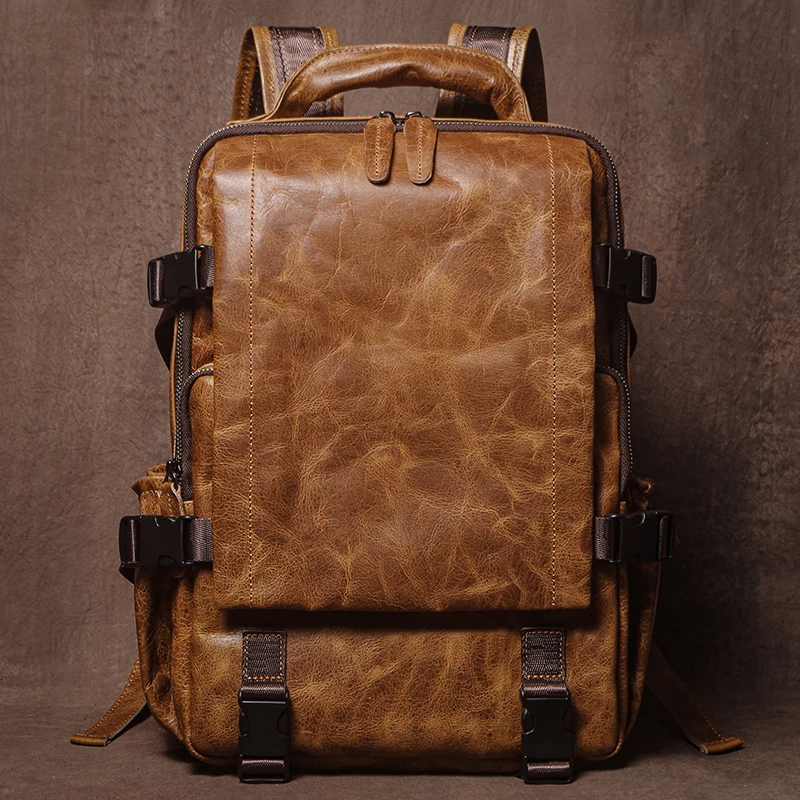
Initial Stiffness and Extended Break-in Period
New full grain leather products are notably rigid and unyielding—a characteristic that can surprise first-time buyers expecting immediate comfort. This stiffness requires a sometimes lengthy break-in period before the material conforms to your usage patterns.
Different full grain leather items have varying break-in timelines:
- Footwear typically needs 2-4 weeks of regular use before molding comfortably
- Bags and backpacks require 1-2 months of use to develop flexibility at stress points
- Furniture pieces may need 3-6 months before reaching optimal comfort levels
During this break-in period, the material can cause discomfort or inconvenience. Stiff leather straps might dig into shoulders, new wallets resist conforming to pocket shapes, and freshly purchased furniture may feel unyielding.
The physical process behind the art of patina development involves gradual fiber relaxation and oil redistribution throughout the leather structure. While this eventually results in a perfectly personalized fit, the initial phase can test a user’s patience.
Some consumers find this break-in period frustrating, especially when comparing the experience to synthetic materials or heavily processed leathers that offer immediate flexibility and comfort without the extended adaptation period.
Limited Color and Finish Options
Full grain leather presents significant challenges when it comes to color variety and finish options. Due to its natural, unaltered surface, this leather type has inherent limitations that restrict aesthetic possibilities.
The material’s natural variations cause dye to absorb unevenly across the surface, making vibrant or perfectly uniform colors difficult to achieve. Manufacturers typically struggle to produce consistent, bright colors while maintaining the natural characteristics of full grain leather.
Consequently, most brown leather backpacks and other full grain leather products come in a limited palette dominated by earth tones—browns, tans, blacks, and muted colors that better accommodate the leather’s natural variations.
Additionally, natural dyes are often preferred for full grain leather to preserve its breathing properties and aging characteristics. These natural colorants have a more limited spectrum than synthetic alternatives used on heavily processed leathers.
For consumers seeking specific color matches or vibrant hues, this limitation can be frustrating. Fashion-forward designs that require precise color coordination or trend-specific shades often turn to corrected grain leathers that accept more consistent and varied dyeing processes.
This color limitation extends beyond initial appearance—as full grain leather develops its patina over time, colors shift and mature, further complicating long-term aesthetic planning for designers and consumers alike.
Susceptibility to Visible Scratches and Wear Marks
Full grain leather’s natural, unprotected surface makes it particularly vulnerable to visible scratches and marks—a characteristic that represents both its authenticity and a potential disadvantage.
Unlike corrected grain leathers that have been sanded and coated with protective finishes, full grain leather’s natural surface readily records every interaction. Minor scratches from keys, pet claws, or everyday bumps remain plainly visible rather than being disguised by protective coatings.
This vulnerability creates a paradox in the material’s use: what some owners appreciate as developing “character” and patina, others see as damage and premature wear. A scratch that tells a story to one person appears as a flaw to another.
Common scenarios like setting a bag on a rough surface, brushing against a sharp edge, or even regular handling can leave permanent marks on full grain leather. While minor scratches can often be buffed or conditioned to become less noticeable, they typically remain part of the item’s evolving appearance.
For consumers who prefer pristine, unchanged appearances in their possessions, this characteristic represents a significant drawback compared to more heavily finished materials that resist such visible aging.
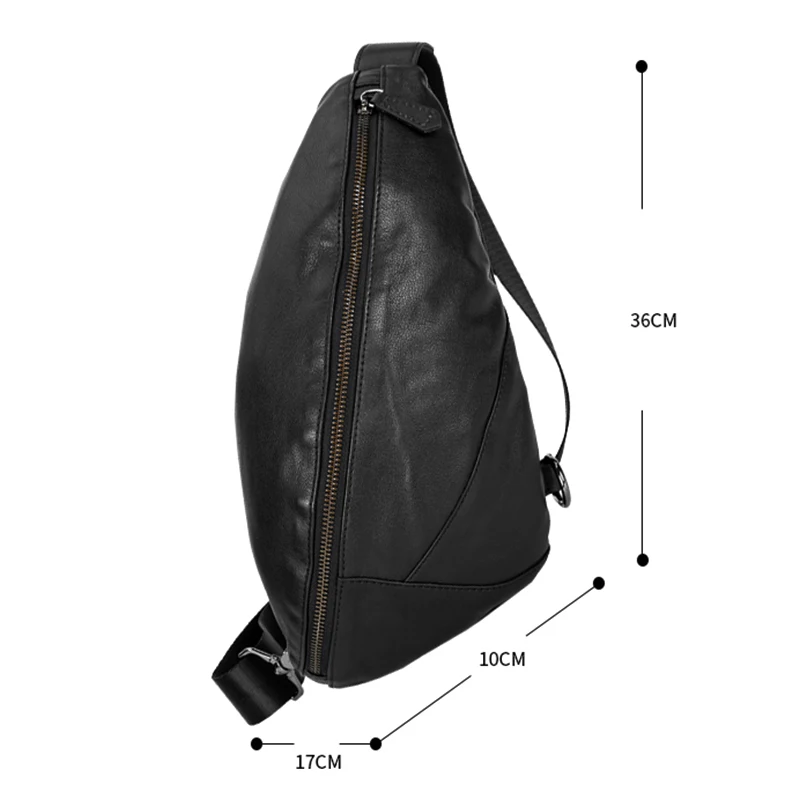
Weather Sensitivity and Environmental Concerns
Full grain leather’s natural properties make it particularly responsive—sometimes negatively—to environmental conditions. This sensitivity creates practical limitations for users in various climates and situations.
Water exposure presents one of the biggest challenges. When leather gets wet, it can develop water spots, stiffness, or shape distortion if not properly dried and conditioned. Without appropriate waterproofing treatments, rain or spills can cause permanent damage.
Temperature extremes affect full grain leather significantly:
* Heat causes drying and potential cracking
* Cold temperatures increase stiffness and brittleness
* Fluctuating conditions stress the material through expansion and contraction
Humidity variations pose additional challenges, as leather absorbs and releases moisture based on ambient conditions. This can lead to mold growth in humid environments or excessive drying in arid climates.
These sensitivities create practical challenges for travelers or those living in areas with extreme or variable weather. For outdoor applications, weather-resistant roll top leather backpacks with special treatments offer some improvements, but even these roll top leather backpack designs have limitations compared to synthetic waterproof materials.
Proper storage becomes critical but sometimes difficult to achieve—leather needs air circulation to prevent mold while also requiring protection from direct sunlight and heat sources that can cause drying.
14 Inch Leather Laptop Backpack, Brown Leather Backpack, Men's Leather Backpack, Vintage Leather Backpack
Price range: $177.28 through $199.12 Select options This product has multiple variants. The options may be chosen on the product pageCarry On Leather Backpack, Roll Top Leather Backpack
Price range: $77.76 through $96.48 Select options This product has multiple variants. The options may be chosen on the product pageDesigner Men's Backpack, Men's Leather Laptop Backpack, Men's Leather Work Backpack
Price range: $158.04 through $160.04 Select options This product has multiple variants. The options may be chosen on the product page15 Inch Leather Laptop Backpack, Leather Briefcase Backpack
$332.96 Select options This product has multiple variants. The options may be chosen on the product page17 Inch Leather Laptop Backpack, Men's Leather Travel Backpack, Men's Leather Work Backpack
Price range: $106.28 through $143.88 Select options This product has multiple variants. The options may be chosen on the product pageBrown Leather Backpack, Women's Leather Backpack
$112.16 Select options This product has multiple variants. The options may be chosen on the product page
Manufacturing Challenges and Availability
The manufacturing complexities associated with full grain leather create downstream effects on product availability and options for consumers. These production challenges contribute significantly to both higher prices and limited selection.
Working with full grain leather requires specialized equipment and highly trained craftspeople with specific skills. The material’s natural variations and thickness demand expertise that takes years to develop, limiting the number of manufacturers capable of working with it effectively.
Production inefficiencies include:
* Lower yield per hide (often only 60-70% usable material due to quality standards)
* Longer production timelines as craftspeople work around natural flaws
* Higher rejection rates during quality control processes
* Need for hand-finishing techniques that resist automation
These factors create a market reality where genuine full grain leather products are less widely available than their counterparts made from other leather types for durable bags. Limited production capacity often means fewer style options, restricted size ranges, and less frequent product refreshes compared to mass-produced alternatives.
For consumers, this translates to fewer choices and occasionally longer wait times for made-to-order pieces. The specialized nature of full grain leather production also means fewer manufacturers offer customization options, as each variation increases production complexity.
How Full Grain Compares: When to Choose Alternatives
While full grain leather offers exceptional qualities, understanding when alternatives might better serve specific needs helps consumers make smarter purchasing decisions.
| Leather Type | Price Range | Durability | Maintenance | Best Applications |
|---|---|---|---|---|
| Full Grain | $$$$ | Excellent | High | Heirloom items, investment pieces |
| Top Grain | $$$ | Very Good | Moderate | Professional daily use items |
| Genuine Leather | $$ | Fair | Low-Moderate | Casual accessories, budget options |
| Bonded Leather | $ | Poor | Minimal | Temporary use items, appearance-focused pieces |
Budget considerations often drive leather choices. When cost constraints are significant, top grain leather offers a reasonable compromise—removing some natural imperfections while retaining good durability at a lower price point.
For specific environmental challenges, specially treated leathers might perform better. Water-resistant treated top grain leather often outperforms untreated full grain in wet conditions, making it more suitable for outdoor activities or rainy climates.
When specific design requirements include vibrant colors or perfectly consistent appearance, corrected grain leathers accept dyes and finishes more consistently while maintaining acceptable durability.
Weight sensitivity represents another consideration where alternatives shine. For travel accessories or items carried frequently, lightweight split leathers or quality synthetic materials significantly reduce carrying burden while offering appropriate durability for their intended lifespan.
Understanding these full grain versus top grain leather differences along with the various grades of leather helps consumers match material properties to their specific needs rather than simply choosing the “best” leather regardless of application.
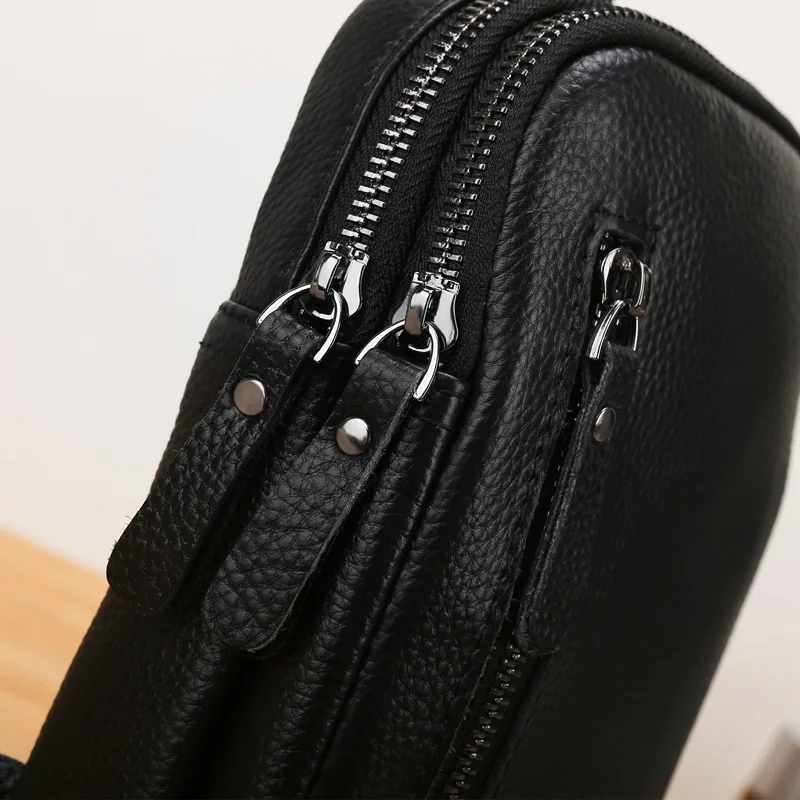
Conclusion: Is Full Grain Leather Worth the Drawbacks?
After exploring the various disadvantages of full grain leather—from its premium price point and maintenance demands to its physical limitations and environmental sensitivities—the question remains: do these drawbacks outweigh its benefits?
The answer depends entirely on your personal priorities, intended use, and expectations. Full grain leather isn’t universally the “best” choice for every application or user, despite its premium reputation.
For those who value longevity and character development in their possessions, the initial investment and ongoing maintenance often prove worthwhile. The material’s ability to last decades rather than years creates value over time that can justify its higher upfront cost and care requirements.
However, for consumers seeking lightweight, consistently colored, immediately comfortable, or low-maintenance options, the disadvantages may outweigh the benefits. There’s no shame in choosing more practical materials for specific use cases where full grain leather’s limitations create genuine inconvenience.
Perhaps the most balanced approach is considering where full grain leather’s unique properties matter most. Is full grain leather better for backpacks? Often yes, if durability and aging gracefully matter to you. For items that face heavy wear, the investment typically pays dividends through extended lifespan and improved aging characteristics.
The key lies in making informed choices based on a realistic assessment of both advantages and disadvantages rather than simply pursuing premium materials for their own sake.
FAQs About Full Grain Leather Disadvantages
Does full grain leather get better or worse with age?
Full grain leather typically improves with age as it develops a patina and conforms to use patterns. However, this depends entirely on proper maintenance and care. Without regular conditioning and appropriate protection, it can deteriorate instead, developing cracks and excessive dryness.
Can full grain leather be waterproofed effectively?
While it can be treated with waterproofing products that provide moderate resistance to moisture, full grain leather can never be made completely waterproof without compromising its natural breathing properties. Even well-treated leather requires drying and reconditioning after significant water exposure.
Is full grain leather worth the extra cost for everyday items?
For items used daily that benefit from strength and longevity, such as bags, belts, and quality footwear, the investment often proves worthwhile over time. For decorative items or rarely used accessories, the premium price may be harder to justify against the actual value received.
How can I tell if full grain leather is genuine?
Authentic full grain leather displays visible natural grain patterns, pores, and occasional natural markings. The edges show consistent fiber structure throughout, and the material develops a patina with use rather than wearing away. The optimal leather thickness for backpacks and other items can also indicate quality—typically 1.8-2.2mm for full grain leather bags.
Are there sustainable alternatives with similar benefits?
Some vegetable-tanned top grain leathers offer similar durability with fewer natural imperfections. For those seeking non-animal alternatives, premium cork products and certain high-end synthetic materials are improving in durability and aging characteristics, though they still don’t develop the same unique patina as full grain leather.
